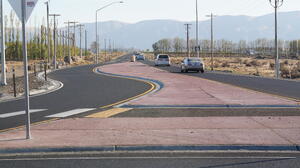 Infrastructure demands on our local and state transportation divisions continue to exceed our nation’s financial resources. Departments of Transportation around the country face the challenges of deteriorating infrastructure, increasing maintenance costs and decreasing budgets. What’s more, most states have adopted Toward Zero Deaths initiatives, such as Washington State’s Target Zero. Funds are extremely limited and goals are admirably high. In this environment it is vital that we maximize our limited transportation dollars and choose projects and design elements that make the most significant difference in keeping our friends and neighbors safe.
Infrastructure demands on our local and state transportation divisions continue to exceed our nation’s financial resources. Departments of Transportation around the country face the challenges of deteriorating infrastructure, increasing maintenance costs and decreasing budgets. What’s more, most states have adopted Toward Zero Deaths initiatives, such as Washington State’s Target Zero. Funds are extremely limited and goals are admirably high. In this environment it is vital that we maximize our limited transportation dollars and choose projects and design elements that make the most significant difference in keeping our friends and neighbors safe.
Maximizing safety and performance while minimizing costs is at the heart of our MacKay Sposito Practical Solutions commitment. Roundabouts are one of the most effective ways of improving both safety and performance, while keeping an eye on the bottom line to ensure the intersection design results in cost-effective solutions.
Roundabout design in the United States is a relatively new study and researchers are eagerly pursuing designs that further improve the safety and traffic performance. Converting a traditional intersection to a roundabout is likely to decrease injury collisions by 75% and fatal collisions by 90% (http://www.wsdot.wa.gov/Safety/roundabouts/benefits.htm). But while we strive for further improvement we must make sure that additional measures maintain the high level of cost effectiveness set by the roundabout in general.
In order to stretch funding further to improve more intersections and save lives, I would suggest you cast a critical eye on every design feature. New studies are suggesting that some traditional features may not be necessary to achieve the same benefits. Here are two questions to consider during your design phase:
- Is the curb necessary?
- Is partial illumination sufficient?
Is the Curb Necessary?
Many of us live in urban areas where curb and gutter is taken for granted. However, most roads are rural and most traffic fatalities occur on these rural roads. The fatality rate for rural roads is more than two times the fatality rate for urban roads (http://safety.fhwa.dot.gov). While the curbing on splitter and center islands is typically necessary to ensure proper vehicle path and speeds, in the case of rural roundabouts, and even some urban roundabouts, the designer needs to consider the costs and benefits of the outer curb. Some case studies suggest that the elimination of the outer curb, particularly on rural roundabouts with high speed approaches, did not result in a reduction of safety or performance, but there was a significant reduction in cost. The cost savings of foregoing outer curb may be more effectively used towards contributing to another roundabout and saving 90% of the lives at that intersection.
Note: The image above is of a roundabout on SR 243 in Mattawa, WA which was completed on July 31, 2014. They utilized a combination of curbing for speed reduction on the approach, and no outer curb at the circulating roadway or exit.
Is Partial Illumination Sufficient?
There is a study underway at Georgia Institute of Technology looking at the effects of illumination crash rates at roundabouts (http://www.gti.gatech.edu). The final report won’t be published until later this year, but the early results were presented at the Transportation Research Board 4th International Conference on Roundabouts. In short, the change from no illumination to illumination of the circulating roadway yielded a large decrease in crash rate, while full illumination of the approaches yielded a smaller benefit and continuous illumination provided no additional reduction in crash rate. Hopefully the final report will further confirm these findings and identify the optimal lighting levels from a cost-efficiency standpoint. This would be especially informative if fatalities and injury crashes are analyzed separately. I will follow up in future posts when the results have been released from this study.
Since transportation funds are limited and decreasing, it is our responsibility as transportation designers to aggressively seek the most cost-effective designs and save the most lives as possible, as soon as possible. We must utilize Practical Solutions to stretch transportation dollars as far and as effectively as possible. We need to assess every element of our designs with the same critical eye to ensure we get the most bang for the buck.
I am interested in your feedback. Are there other design elements of roundabouts, other intersections or roadways that make you question their cost effectiveness? Are there other ways you have been able to stretch your limited funds further while still maintaining performance?

